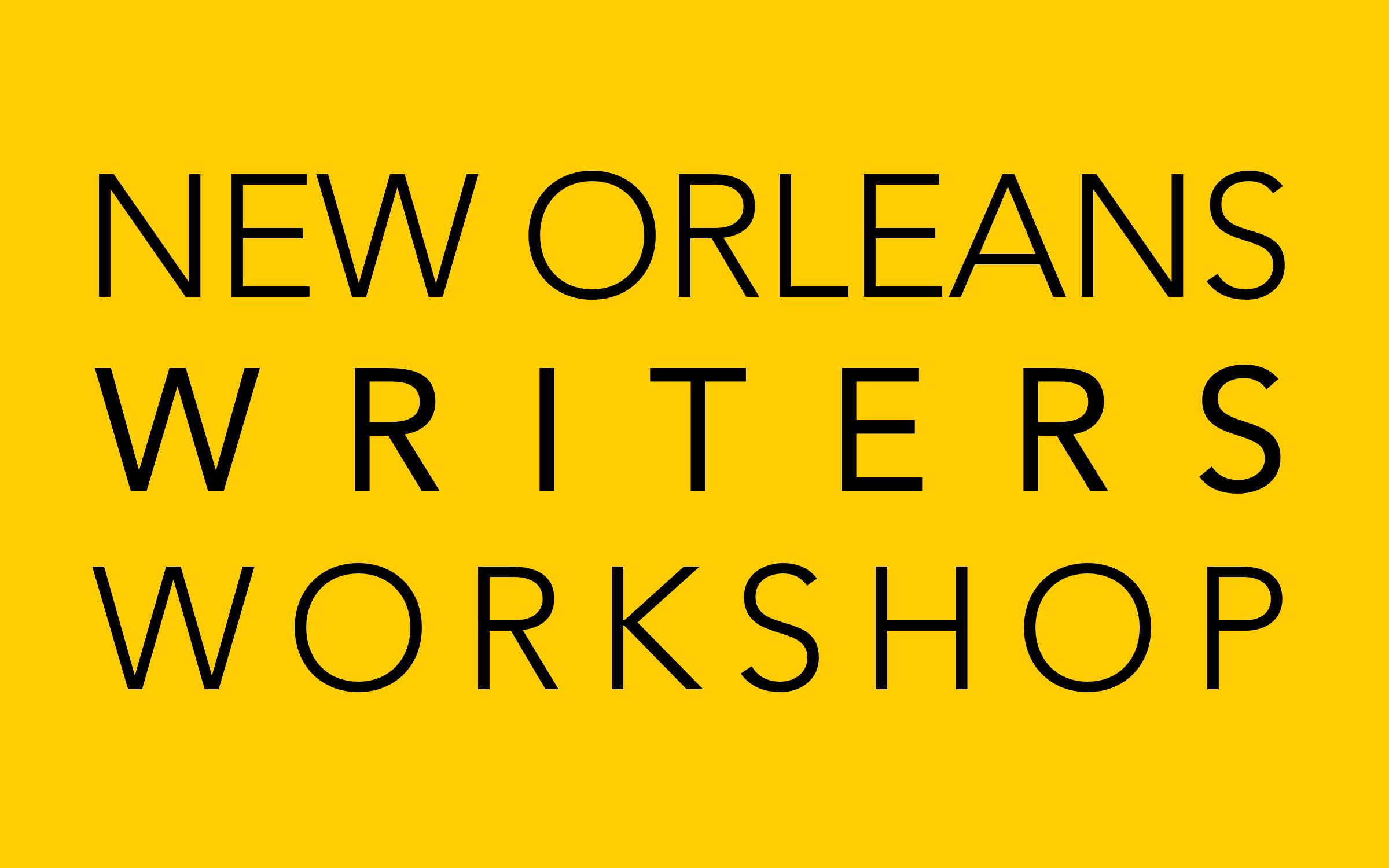By Brad Richard
In writing the first lines of a poem, I’m managing multiple aspects of form all at once: the form of the sentence in relationship to the form of the line and the stanza; the formal patterns of rhythm, alliteration, assonance, rhyme; the visual form of the poem on the page; rhetorical forms; the rules of the fixed form I’ve chosen (if I have) or the rules that evolve as I write; the form of an argument (if there is one); etc. Attending to one or two formal elements usually gets me started (let’s use anaphora; let’s use parataxis; let’s write a pantoum that uses parataxis and anaphora) and will usually be enough to drive me to complete a draft (which really means two or three drafts) in which I figure out what this poem means to offer the reader and how I can help it do so. In revision, I reconsider each formal element to be sure it’s doing meaningful and necessary structural work and is not merely decorative—a judgment I usually can’t make until I’ve written a few drafts.
I want to try to break some of that down in practical and theoretical terms.
Practical:
- Form can help me to start writing. Once I’ve decided to write a ghazal, or a pantoum, or a syllabic stanza that I’ve come up with, some of the planning has already done. I still have to write the lines, but some aspect of their shape and heft has been decided, as has part of their motivation and direction. The form gives me an excuse and a map for writing.
- Form can help me to think. The shape of the lines guides the shape of the thinking. Curiously, it does that by offering some helpful resistance, and that resistance stimulates my imagination. It’s not “natural” to write in iambic pentameter, or rhyme, or in any of the fixed forms (like sonnets or villanelles) or a nonce form. What is natural is for the mind to resist a form’s constraints while working within them; this is where imagination comes in, helping me find unexpected ways to stay within the “impersonal” form while saying something distinctly “personal.” (Another way to think about this is to consider form as a game whose rules you’ve agreed to follow, even if you’re sometimes looking for ways to work against the rules without ever quite violating them.)1
- Form can help me to re-think. If I’ve set out to write a sonnet, and the second or third draft still needs to be a sonnet, then I have that form to help direct my revisions. If I’ve set out to write a sonnet, and the second or third draft, in order to become the poem it needs to be (that particular expressive art object), rejects the sonnet form, I’ll follow that resistance into whatever form it leads to and let the sonnet linger somewhere deep in the finished poem’s DNA. Resistance to form is still engagement with it.
Other practical considerations about form arise in the composition process, but most of them follow from one of those three precepts. There are also some theoretical considerations which, although they may not directly affect how I write a particular poem, are useful in helping me read and think about my own work and that of other poets.
Theoretical:
- Form is a way of being within a tradition. Two important writers to read on this idea are T.S. Eliot (“Tradition and the Individual Talent”) and Reginald Shepherd (many of his essays in Orpheus in the Bronx). Here’s my two cents: poetic tradition exists whether you want it to or not, so if you’re going to be a poet, you may as well learn about it. Actually, learn from it, and, hopefully, strive to exist as a distinct presence within it. This requires reading, imitation, practice, failure . . . until you finally write, say, a sonnet that isn’t merely successful because you’ve mastered the form but that succeeds beyond the form, and in some sense beyond you, because the tradition has helped you write a poem no one else could have written (and which only happened to be a sonnet, in this instance). As translator and editor Michael Alexander observed: “It is at this stage, when he [sic] begins to compose with and through the form rather than simply in it, that the poet can begin to use his [sic] material. Paradoxically, as the material of Anglo-Saxon and most oral poetry is traditional, it is truer to say that it is precisely when the scop has learned to use the language that the tradition is tapped, and can begin to use him [sic] as its anonymous vehicle. At this milestone the convenient distinction between form and material has to be discarded, because ‘the tradition’ does not exist apart from the language—it is inherent in its idioms and rhythms. In any great passage of verse—as, say, Prospero’s ‘cloud-capp’d palaces’ speech, or ‘The Lay of the Last Survivor’ in Beowulf—the poet becomes invisible. . . . One has the distinct impression that the ‘shaping spirit’ has put the whole machinery of composition into overdrive.” [from the introduction to The Earliest English Poems, Penguin, 1966.] This also speaks to my understanding of duende.
- Form is not static. Form is dynamic. Form evolves. I find the least helpful approaches to learning or understanding form to be the strictly prescriptive ones that never really allow for significant variation, even for beginners. A poet might present something that doesn’t seem to resemble the tradition’s exemplars, but if it’s any good at all (if it has led to a literary art object expressing something distinctive in a distinct way), you’ll probably find vestiges of the tradition in it, and finding those vestiges will deepen your appreciation of the work. On the flip side: a poet might present something that strongly resembles the tradition’s exemplars but is ultimately lifeless, static, stuck in an unimaginative version of the past. [Let me stress here that acknowledging and embracing non-Anglo-European traditions is crucial. Not recognizing the presence of a tradition is just ignorance. Not respecting it and trying to understand it is arrogant and bigoted.]
- If there’s no form, is there a poem? For me, it’s most productive for this question to remain open and unanswerable. Writers from Flaubert on have dreamed of a kind of pure literature that doesn’t depend on human meaning or intention. Flaubert’s dream was of “a book about nothing, a book dependent on nothing external, which would be held together by the strength of its style, just as the earth, suspended in the void, depends on nothing external for its support” (letter to Louise Colet, January 12/14, 1852). It’s an alluring dream: the pursuit of it (and the resistance to it) has led to some of the most interesting art of the last 175 years. And most of that art evinces some formal impulse, or a compulsion to resolve into some formal shape. But maybe another throw of the dice . . . ?
Also: fixed forms are never fixed. Compare a Wordsworth sonnet with one by Hopkins or Gwendolyn Brooks e.e. cummings or Rita Dove. The rules a sonnet is supposed to follow (meter, rhyme scheme, an argument)aren’t a sonnet. They’re a grammar, but not a sentence that expresses something. Expression (whatever that means to the poet in that instance) uses those rules for its own end. To lean on the cartographic analogy: the poem’s territory rewrites the map. See also Elizabeth Bishop, Jane Miller, Wanda Coleman, Terrance Hayes.

